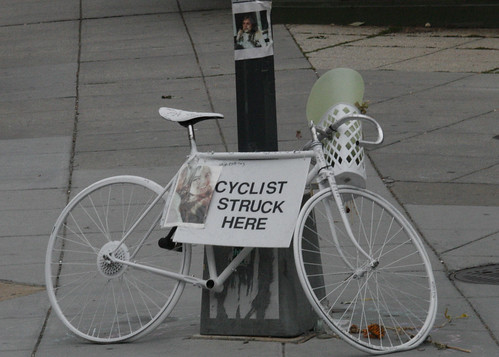I just came across this nifty animation demonstrating the famed “Idaho Stop” for bicyclists, in which the law allows cyclists to conserve momentum by treating stop signs as Yield signs. It was created during the failed push to have the Idaho rules applied in Oregon. It’s great!
Bicycles, Rolling Stops, and the Idaho Stop from Spencer Boomhower on Vimeo.
This interesting piece on Slate from last October talks about the problem of how the law might be adapted to reflect the rising number of cyclists. Should we pass new laws that reflect the fact that almost all existing traffic laws were developed to apply to motorized traffic? Or should we hope cops will be more like Major “Bunny” Colvin on The Wire, and adopt “the brown paper bag” model of dealing with inevitable law-breaking?
What to do? Today’s cycling activists generally split into two groups: “vehicularists” and “facilitators.” Proponents of “vehicular cycling” believe bikes should act as cars: occupy full lanes, stop at red lights, use a hand signal at least 100 feet ahead of a turn. That’s the best way to make cars—and policymakers—aware of bicycles and to respect them as equals on the road. When it comes to making roads safe for bikes, vehicularists tend to favor training, education (most cities offer bike safety classes), and enforcement. Cyclists should not grouse about moving violations, the vehicularists argue. It is a sign that they’re being treated as equals.
Facilitators, meanwhile, say we should change the laws and the environment to recognize the innate differences between bikes and cars. That means special facilities like bike lanes, bike paths (elevated trails separate from the road), and even Copenhagen-style traffic lights for bikes. It would also mean changing car-centric laws that don’t make sense for bikes, like the rule that says you need to come to a complete stop at a stop sign.
I know where I stand in that debate. How about you?

